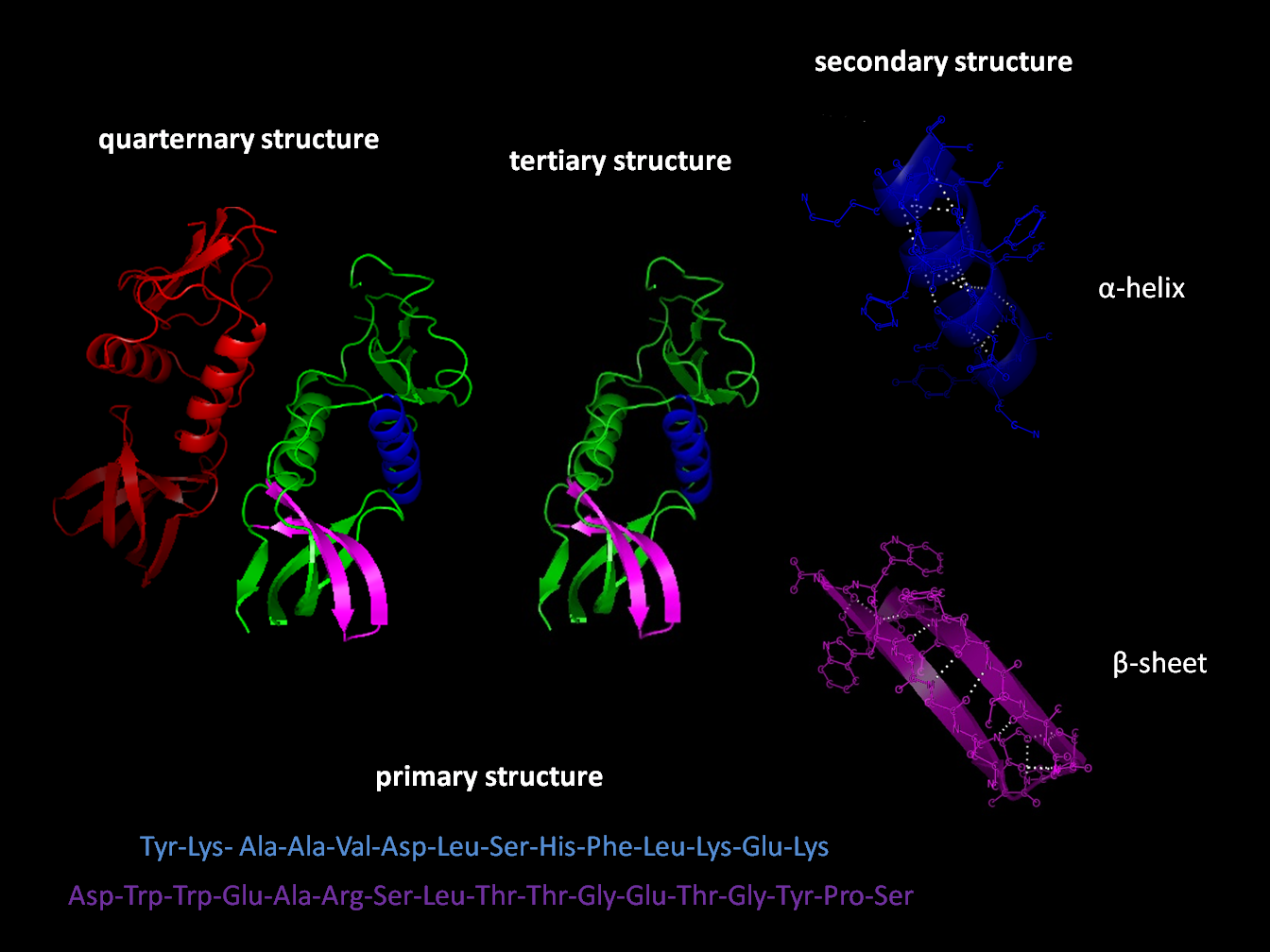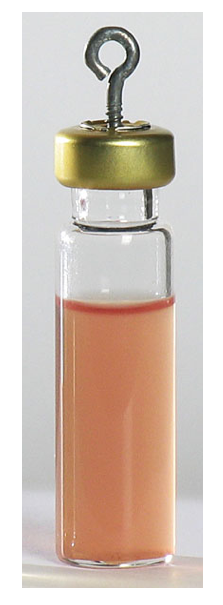|
Pressure Perturbation Calorimetry
Pressure perturbation calorimetry (PPC) is a technique closely related to isothermal titration calorimetry (ITC) and differential scanning calorimetry (DSC). In brief, PPC measures heat changes associated with dilute aqueous solutions of proteins or other biomolecules in response to introduction of relatively small pressure perturbations (± 5 atm). Importantly, such heat changes can be related to thermodynamic properties of proteins such as hydration and conformational transitions upon folding and/or ligand binding. See also * Differential scanning calorimetry * Isothermal microcalorimetry * Isothermal titration calorimetry * Sorption calorimetry The method of sorption calorimetry is designed for studies of Tissue hydration, hydration of complex organic and biological materials. It has been applied for studies of surfactants, lipids, DNA, nanomaterials and other substances. A sorption calo ... Bibliography * * * {{refend Calorimetry ... [...More Info...] [...Related Items...] OR: [Wikipedia] [Google] [Baidu] |
Isothermal Titration Calorimetry
In chemical thermodynamics, isothermal titration calorimetry (ITC) is a physical technique used to determine the Conjugate variables (thermodynamics), thermodynamic parameters of interactions in Solution (chemistry), solution. ITC is the only technique capable comprehensively characterizing Thermodynamics, thermodynamic and even Kinetic energy, kinetic profile of the interaction by simultaneously determining binding constants (K_a), reaction stoichiometry (n), enthalpy (\Delta H), Gibbs free energy (\Delta G) and entropy (\Delta S) within a single experiment. It consists of two cells which are enclosed in an adiabatic jacket. The compounds to be studied are placed in the sample cell, while the other cell, the reference cell, is used as a Treatment and control groups, control and contains the Buffer solution, buffer in which the sample is dissolved. The technique quantifies the heat released or absorbed during the binding process by incrementally adding one reactant (via a syringe ... [...More Info...] [...Related Items...] OR: [Wikipedia] [Google] [Baidu] |
Differential Scanning Calorimetry
Differential scanning calorimetry (DSC) is a thermoanalytical technique in which the difference in the amount of heat required to increase the temperature of a sample and reference is measured as a function of temperature. Both the sample and reference are maintained at nearly the same temperature throughout the experiment. Generally, the temperature program for a DSC analysis is designed such that the sample holder temperature increases linearly as a function of time. The reference sample should have a well-defined heat capacity over the range of temperatures to be scanned. Additionally, the reference sample must be stable, of high purity, and must not experience much change across the temperature scan. Typically, reference standards have been metals such as indium, tin, bismuth, and lead, but other standards such as polyethylene and fatty acids have been proposed to study polymers and organic compounds, respectively. The technique was developed by E. S. Watson and M. J. O'Ne ... [...More Info...] [...Related Items...] OR: [Wikipedia] [Google] [Baidu] |
Aqueous Solution
An aqueous solution is a solution in which the solvent is water. It is mostly shown in chemical equations by appending (aq) to the relevant chemical formula. For example, a solution of table salt, also known as sodium chloride (NaCl), in water would be represented as . The word ''aqueous'' (which comes from ''aqua'') means pertaining to, related to, similar to, or dissolved in, water. As water is an excellent solvent and is also naturally abundant, it is a ubiquitous solvent in chemistry. Since water is frequently used as the solvent in experiments, the word solution refers to an aqueous solution, unless the solvent is specified. A ''non-aqueous solution'' is a solution in which the solvent is a liquid, but is not water. Characteristics Substances that are ''hydrophobic'' ('water-fearing') do not dissolve well in water, whereas those that are '' hydrophilic'' ('water-friendly') do. An example of a hydrophilic substance is sodium chloride. In an aqueous solution the hydrogen ... [...More Info...] [...Related Items...] OR: [Wikipedia] [Google] [Baidu] |
Protein
Proteins are large biomolecules and macromolecules that comprise one or more long chains of amino acid residue (biochemistry), residues. Proteins perform a vast array of functions within organisms, including Enzyme catalysis, catalysing metabolic reactions, DNA replication, Cell signaling, responding to stimuli, providing Cytoskeleton, structure to cells and Fibrous protein, organisms, and Intracellular transport, transporting molecules from one location to another. Proteins differ from one another primarily in their sequence of amino acids, which is dictated by the Nucleic acid sequence, nucleotide sequence of their genes, and which usually results in protein folding into a specific Protein structure, 3D structure that determines its activity. A linear chain of amino acid residues is called a polypeptide. A protein contains at least one long polypeptide. Short polypeptides, containing less than 20–30 residues, are rarely considered to be proteins and are commonly called pep ... [...More Info...] [...Related Items...] OR: [Wikipedia] [Google] [Baidu] |
Biomolecule
A biomolecule or biological molecule is loosely defined as a molecule produced by a living organism and essential to one or more typically biological processes. Biomolecules include large macromolecules such as proteins, carbohydrates, lipids, and nucleic acids, as well as small molecules such as vitamins and hormones. A general name for this class of material is ''biological materials''. Biomolecules are an important element of living organisms. They are often endogeny (biology), endogenous, i.e. produced within the organism, but organisms usually also need exogeny, exogenous biomolecules, for example certain nutrients, to survive. Biomolecules and their organic reaction, reactions are studied in biology and its subfields of biochemistry and molecular biology. Most biomolecules are organic compounds, and just four chemical element, elements—oxygen, carbon, hydrogen, and nitrogen—make up 96% of the human body's mass. But many other elements, such as the various biometal (b ... [...More Info...] [...Related Items...] OR: [Wikipedia] [Google] [Baidu] |
Protein Folding
Protein folding is the physical process by which a protein, after Protein biosynthesis, synthesis by a ribosome as a linear chain of Amino acid, amino acids, changes from an unstable random coil into a more ordered protein tertiary structure, three-dimensional structure. This structure permits the protein to become biologically functional or active. The folding of many proteins begins even during the translation of the polypeptide chain. The amino acids interact with each other to produce a well-defined three-dimensional structure, known as the protein's native state. This structure is determined by the amino-acid sequence or primary structure. The correct three-dimensional structure is essential to function, although some parts of functional proteins Intrinsically unstructured proteins, may remain unfolded, indicating that protein dynamics are important. Failure to fold into a native structure generally produces inactive proteins, but in some instances, misfolded proteins have ... [...More Info...] [...Related Items...] OR: [Wikipedia] [Google] [Baidu] |
Differential Scanning Calorimetry
Differential scanning calorimetry (DSC) is a thermoanalytical technique in which the difference in the amount of heat required to increase the temperature of a sample and reference is measured as a function of temperature. Both the sample and reference are maintained at nearly the same temperature throughout the experiment. Generally, the temperature program for a DSC analysis is designed such that the sample holder temperature increases linearly as a function of time. The reference sample should have a well-defined heat capacity over the range of temperatures to be scanned. Additionally, the reference sample must be stable, of high purity, and must not experience much change across the temperature scan. Typically, reference standards have been metals such as indium, tin, bismuth, and lead, but other standards such as polyethylene and fatty acids have been proposed to study polymers and organic compounds, respectively. The technique was developed by E. S. Watson and M. J. O'Ne ... [...More Info...] [...Related Items...] OR: [Wikipedia] [Google] [Baidu] |
Isothermal Microcalorimetry
Isothermal microcalorimetry (IMC) is a laboratory method for real-time monitoring and dynamic analysis of chemical, physical and biological processes. Over a period of hours or days, IMC determines the onset, rate, extent and energetics of such processes for specimens in small ampoules (e.g. 3–20 ml) at a constant set temperature (c. 15 °C–150 °C). IMC accomplishes this dynamic analysis by measuring and recording vs. elapsed time the net rate of heat flow (μJ/s = μW) to or from the specimen ampoule, and the cumulative amount of heat (J) consumed or produced. IMC is a powerful and versatile analytical tool for four closely related reasons: # All chemical and physical processes are either exothermic or endothermic—produce or consume heat. # The rate of heat flow is proportional to the rate of the process taking place. # IMC is sensitive enough to detect and follow either slow processes (reactions proceeding at a few % per year) in a few grams of material, or ... [...More Info...] [...Related Items...] OR: [Wikipedia] [Google] [Baidu] |
Isothermal Titration Calorimetry
In chemical thermodynamics, isothermal titration calorimetry (ITC) is a physical technique used to determine the Conjugate variables (thermodynamics), thermodynamic parameters of interactions in Solution (chemistry), solution. ITC is the only technique capable comprehensively characterizing Thermodynamics, thermodynamic and even Kinetic energy, kinetic profile of the interaction by simultaneously determining binding constants (K_a), reaction stoichiometry (n), enthalpy (\Delta H), Gibbs free energy (\Delta G) and entropy (\Delta S) within a single experiment. It consists of two cells which are enclosed in an adiabatic jacket. The compounds to be studied are placed in the sample cell, while the other cell, the reference cell, is used as a Treatment and control groups, control and contains the Buffer solution, buffer in which the sample is dissolved. The technique quantifies the heat released or absorbed during the binding process by incrementally adding one reactant (via a syringe ... [...More Info...] [...Related Items...] OR: [Wikipedia] [Google] [Baidu] |
Sorption Calorimetry
The method of sorption calorimetry is designed for studies of Tissue hydration, hydration of complex organic and biological materials. It has been applied for studies of surfactants, lipids, DNA, nanomaterials and other substances. A sorption calorimetric experiment is performed at isothermal regime, but different temperatures can be studied in separate experiments. In a sorption calorimetric experiment, a two-chamber calorimetric cell is inserted into a double-twin microcalorimeter. Water evaporates, diffuses through the tube connecting two chambers of the calorimetric cell and is absorbed by the studied substance. The amount of evaporated water is calculated from the thermal power registered in the vaporisation chamber: :n_w= \frac From the same data, the activity of water in the sample can also be calculated: :a_w=1-\frac From the thermal powers registered in the two chambers one can calculate the partial molar enthalpy of mixing of water. During the sorption experiment th ... [...More Info...] [...Related Items...] OR: [Wikipedia] [Google] [Baidu] |




